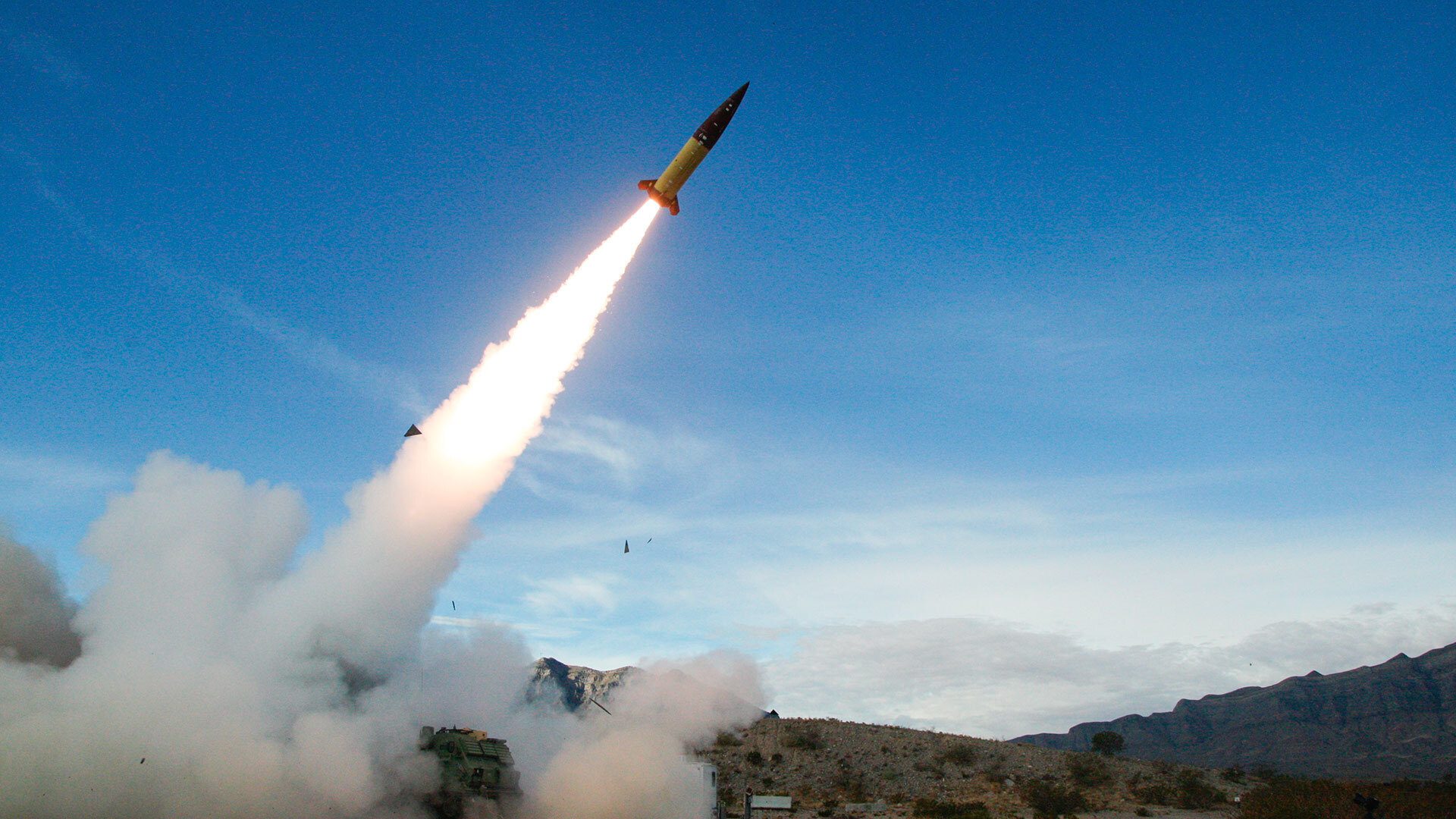- November 19, 2024
- By Chris Carroll
On Tuesday, Ukraine for the first time fired U.S. ballistic missiles into Russia, striking a munitions depot supporting the invasion of the smaller nation.
Authorized by U.S. President Joe Biden, Ukraine in using the Army Tactical Missile System, aka ATACMS (pronounced attack ’ems), stepped across Russian President Vladimir Putin’s latest line in the sand—a revised Russian doctrine that opens up a possibility of a nuclear response to a conventional-weapons strike by any nation backed by a nuclear state.
Maryland Today turned to University of Maryland public policy Professor Steve Fetter, an expert in nuclear weapons policy who has served in the White House and elsewhere in government, to talk about risks of a wider war and opportunities for peace in Ukraine.
Nuclear saber-rattling isn’t new for Putin.
From the beginning of the full-scale invasion of Ukraine in February 2022, Putin has made veiled and not-so-veiled threats about the use of nuclear weapons in hopes of dampening U.S. and European support for the embattled nation, Fetter said. “Some people have concluded these are all bluffs, and so far, they have been,” he said. “I think the revision of their nuclear strategy and the statement that it will be a major escalation if Ukraine uses the ATACMS is also probably a bluff.”
Russia’s new nuclear doctrine may be less significant than it seems.
The recent change says that “aggression against Russia by any non-nuclear state, but with the participation or support of a nuclear state” qualifies as a “joint attack” on Russia—language that’s similar to U.S. doctrine during the Cold War, Fetter said. As before, Russian policy allows the country to consider a nuclear response to a “critical threat to Russian sovereignty.” But, said Fetter, “It is difficult to see how ATACM strikes against bases in Russia that are being used to attack Ukraine is a critical threat to Russian sovereignty.”
Biden has defied each Putin demand.
Although disappointing to Ukraine and some of its supporters, the U.S. has moved quite cautiously in its mission of providing support, Fetter said—but it has been far from passive. “The Biden administration, I think, has wisely moved slowly, because it was concerned about the possibility of nuclear escalation,” Fetter said. “But one by one, President Biden has moved through these red lines that President Putin has attempted to set, first on providing any military equipment, and then Abrams tanks, and then providing jet aircraft, and then providing long-range missiles.” The approval of Ukraine’s use of the U.S. ballistic missile system is likely a response to two things: Putin’s battlefield successes of late and the recent arrival of North Korean troops among the Russian ranks, Fetter said.
Putin’s real nuclear red line isn’t ATACMS—but he likely has one.
“If Russia was facing major military defeat in some theater,” Putin might actually use nuclear arms, Fetter said. “In 2022, when Ukraine was making progress on the battlefield and pushing Russian troops out of parts of Eastern Ukraine, it’s been widely reported that the U.S. intelligence community believed there was a 50% chance that Russia would use nuclear weapons.” Of course, Russia is no longer being pushed back on the battlefield, and Putin and his generals probably don’t see ATACMS as a game changer. “It’s unlikely this leads to an escalation—but I’ve compared it to the situation of walking toward a cliff in the fog. It’s out there, and you hope you’ll see it before you get to it,” Fetter said.
Trump’s enthusiasm for deal-making introduces a wild card
Many in the United States, NATO, Ukraine and Russia assume that when President Donald Trump retakes office in January, he will slash military aid to Ukraine and force a peace deal that will essentially hand territory—and a win—to Russia. “That will really erode the credibility of U.S. security guarantees to other allies,” Fetter said.
But there’s another possibility: “If Trump could strike a good deal for Ukraine and force Russia to make significant concessions, that might end up a good thing for the security of the United States and its allies.”
Topics
ResearchUnits
School of Public Policy